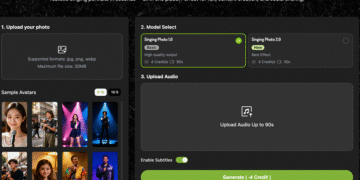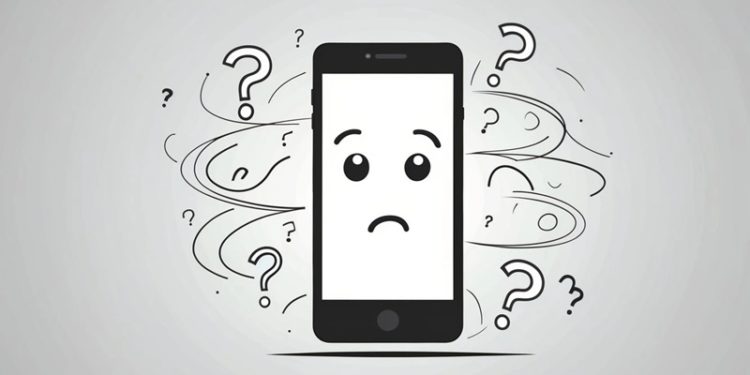In today’s mobile-driven world, Android devices are central to communication, entertainment, and productivity. Yet even the most reliable phones can run into problems—one common frustration is the error: “There was a problem communicating with Google servers.” This typically appears when signing into a Google account, using the Play Store, or syncing data.
The error means your device can’t connect with Google’s servers, which handle authentication, downloads, and synchronization. Causes range from minor network glitches to deeper system conflicts. The result? You may lose access to essential apps like Gmail, YouTube, or Maps, miss updates, or fail to restore backups—disrupting both work and daily routines.
Thankfully, this is usually not a hardware fault and can be fixed with proper troubleshooting. This guide explores root causes and solutions, from quick fixes to advanced tools like DroidKit by iMobie, applicable to all major Android devices.
Common Causes of the Google Server Error on Android
To fix cannot connect to Google server, it helps to understand why it occurs. Knowing the causes lets you target the right solution.
- Network Issues: Weak Wi-Fi, mobile data limits, or VPNs can block communication with Google’s servers.
- Account Problems: Wrong passwords, two-factor glitches, or recent password changes may trigger authentication failures.
- Cache and Data Corruption: Google Play Services and the Play Store often store corrupted cache, leading to errors.
- Date and Time Mismatch: Inaccurate device settings prevent Google’s servers from verifying secure connections.
- Software Conflicts: Outdated Android versions, pending updates, or conflicting apps (like antivirus) can interfere with syncing.
- Device-Specific Factors: Rooted phones, custom ROMs, or rare Google outages may disrupt operations.
By matching the trigger with your situation—for example, errors after an update often mean cache issues—you can troubleshoot more effectively.
Troubleshooting Guide: Solve Google Server Connection Issues on Android
1. Check and Stabilize Your Internet Connection
Toggle Airplane Mode on and off for 30 seconds to reset connections. Switch between Wi-Fi and mobile data to test stability. If on Wi-Fi, restart your router, move closer, or forget and reconnect to the network. On mobile data, confirm it’s enabled and your plan is active. Disable any VPN temporarily, as some block Google’s servers—then test by opening google.com in a browser.
2. Restart Your Device
A classic fix, restarting clears temporary glitches. Hold the power button, tap Restart, and let the device reboot. This refreshes system processes, including those handling Google communications.
For a more thorough reboot, perform a soft reset by holding the power and volume down buttons simultaneously for 10-15 seconds until the device vibrates and restarts.
3. Verify Date and Time Settings
An incorrect time can invalidate security certificates. Go to Settings > System > Date & Time and enable both Automatic date & time and Automatic time zone. If traveling, ensure the time zone matches your location.
4. Clear Cache for Google Apps
Corrupted cache is a frequent offender. In Settings > Apps, clear the cache for Google Play Services, Play Store, and Google Services Framework..
Force stop these apps afterward: Tap Advanced > Force Stop. Reopen the Play Store—it might take a moment to reload, but this often resolves the error.
5. Remove and Re-Add Your Google Account
This refreshes authentication. Go to Settings > Accounts > Google > Remove Account. Confirm, then restart your device. Add it back via Settings > Accounts > Add Account > Google. Enter your credentials carefully.
If 2FA is enabled, have your phone ready for verification codes. Temporarily disabling 2FA in your Google Account settings (myaccount.google.com) can help during this process—re-enable it afterward for security.
6. Update Google Apps and System Software
Outdated software can cause incompatibilities. Open the Play Store, go to My apps & games, and update all Google-related apps. For system updates, head to Settings > System > System Update > Check for update.
If the error blocks Play Store access, download APK files from trusted sites like APKMirror, but enable “Install unknown apps” in Settings first.
7. Use DroidKit to Fix Android System
For persistent issues tied to deeper system problems, third-party tools like DroidKit by iMobie offer a reliable solution. DroidKit is an all-in-one Android toolkit designed to repair system glitches without data loss. It’s particularly effective for errors like this, as it scans and fixes corrupted files, optimizes connections, and resolves framework conflicts.
To use DroidKit:
Step 1: Download and install DroidKit on your Windows or Mac computer from the official iMobie website (imobie.com/droidkit).
Step 2: Connect your Android device via USB cable. Ensure USB debugging is enabled (Settings > About Phone > Tap Build Number 7 times > Developer Options > USB Debugging).
Step 3: Launch DroidKit and select “System Fix” from the main interface. The tool will detect your device model and download the necessary firmware package automatically.
Step 4: Follow on-screen instructions to put your device into Recovery or Download Mode (varies by brand, e.g., for Samsung, hold Volume Down + Power).
Step 5: DroidKit will repair the system, addressing communication errors by reinstalling clean Google framework components.
This process typically takes 10-20 minutes and preserves your data. Users report high success rates for Google server issues, especially on devices from Samsung, Xiaomi, or Google. DroidKit’s 2025 updates include support for the latest Android versions, making it a go-to for tech-savvy users avoiding factory resets.
Conclusion
In summary, the “There was a problem communicating with Google servers” error, while annoying, is fixable through methodical steps. From quick restarts to advanced tools like DroidKit, you have options tailored to your comfort level. By addressing it promptly, you’ll keep your Android experience seamless. If issues persist, consult your device manufacturer or Google support for device-specific advice.











































































